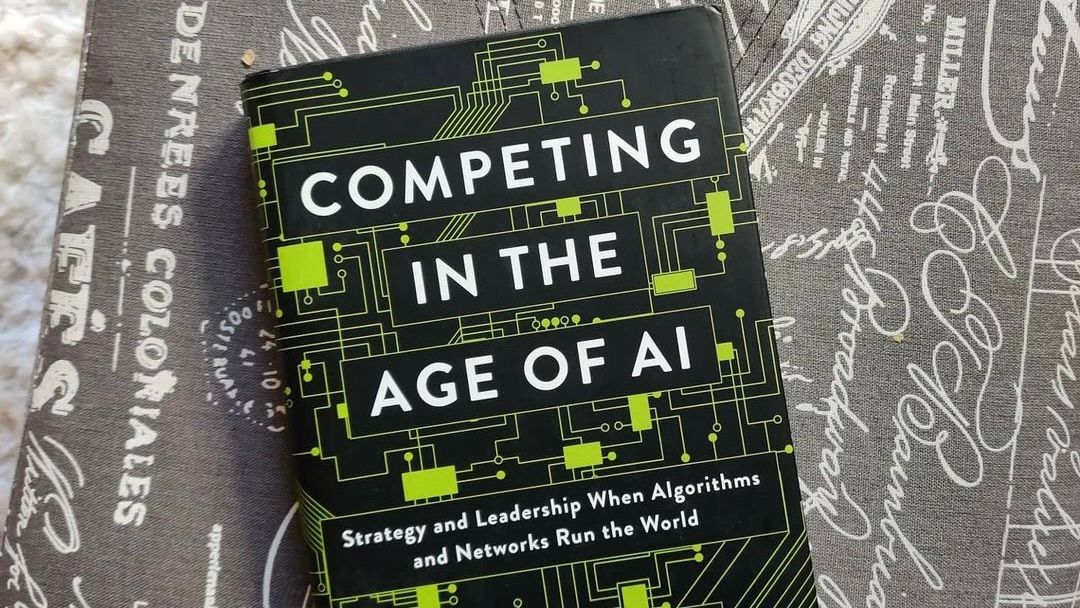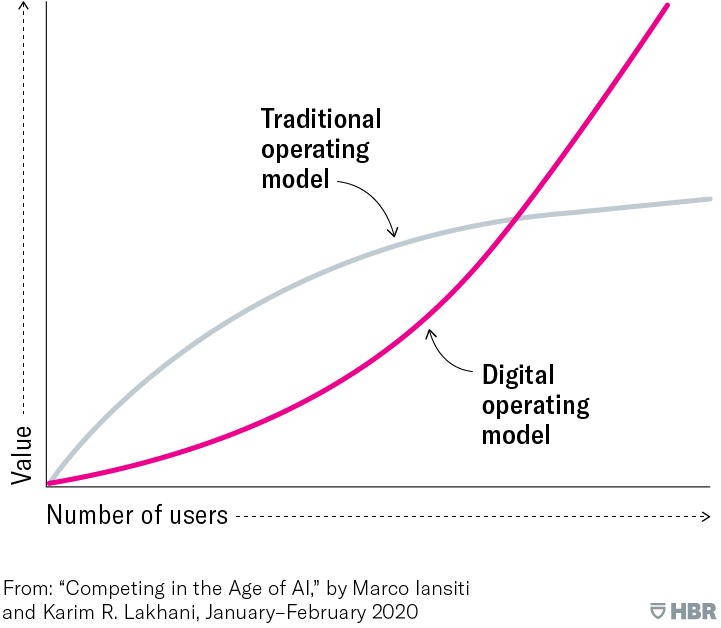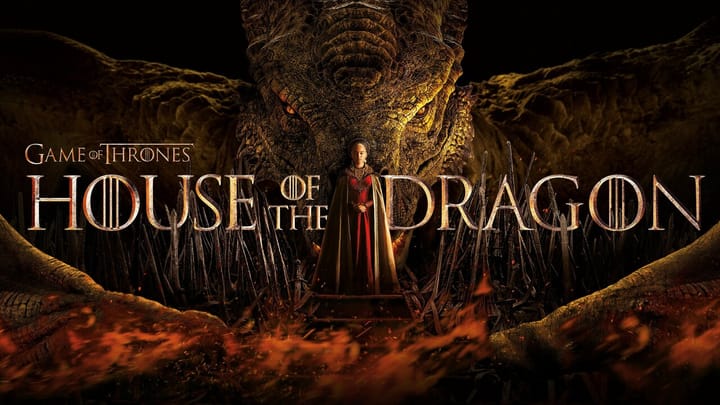Competing in the Age of AI by Marco Iansiti Summary
This book explains what AI is and how to use it strategically in your business.

Key Takeaways
- The author of this book helped Microsoft, Facebook, Amazon, Google, Fidelity, Uber, and Comcast with their AI strategy.
- Be on the side of digital proliferation. Make a social platform app. Allow creators to share what they make.
- Clayton Christensen’s Disruption theory: As organizations get good at doing something in a certain way, they develop routines and systems that reinforce each other and make it difficult to do things differently. Then they get disrupted by innovative companies.
- Legacy companies are ultimately killed by radical new technologies. Kodak was not killed by Fuji, it was killed by the Apple iPhone.
- Computer science + data science = AI.
- Data is the essential input of AI.
- Diseconomies of scale: when you have too many people, too many processes, too many products that require a lot of bureaucrats that ultimately reduce production efficiency—even if you are selling more products for a lower manufacturing cost and a higher margin.
- Network and learning effects are not the same thing. Network effects describe the value added by increasing the number of connections within and across networks, such as the value to a Facebook user of having connections with a large number of friends, or access to a broad variety of developer applications. Learning effects capture the value added by increasing the amount of data flowing through the same networks—for example, data that may be used to power AI to learn about and improve the user experience or to better target advertisers. In both cases, generally speaking, the more the better, but there is a lot of nuance involved in defining how much better.
- The most important value creation dynamic of a digital operating model is its network effects.
- Facebook, fax machines, and crypto all benefit from direct network effects.
- Metcalfe’s law for communication posits that the value of a network is the square of the number of users, N².
- Companies that have two-sided indirect network effects have more options for value capture, because they can find multiple ways to monetize their services by charging each side separately, depending on each side’s willingness to pay. For example, Airbnb charges both the renters and the hosts for each stay.
- Traditional operating models cannot compete with digital operating models. In barely a decade, Airbnb has scaled to offer an inventory of more than 4.5 million rooms, three times as much lodging capacity as Marriott managed to accumulate in its one hundred years.
- There are two kinds of companies: those that know they have been hacked, and those that don’t know they’ve been hacked.
- All of the traditional services are becoming digital. Any service that lends itself to data, analytics, AI, and cloud will be taken over and disrupted by all of the big AI companies.
- "What is all your studying worth, all your learning, all your knowledge, if it doesn’t lead to wisdom?”—Beychae, Use of Weapons by Iain Banks
- Cryptocurrencies could be the fix to a lot of the problems that AI creates. AI is “authoritarian” and about harvesting data. Crypto is “libertarian” and about limiting data collection through encryption and blockchain technology.
- The largest business in the world will be an AI and cryptocurrency business.
Introduction
Facebook and Tencent’s AI isn’t very sophisticated but they have 100s of billions in market cap.
The switch to digital cameras was essential for some social media platforms. Digital cameras and smartphones allowed people to take 100x as many pictures as they used to. Then Instagram and Facebook allowed people to share their photos. In business, you want to be on the side of digital proliferation. Allow people to share what they make. Social platforms perform well. They perform even better when creators can monetize their content—direct monetization works the best. Patreon and Onlyfans have grown exponentially because they help creators monetize their YouTube and Instagram—two platforms that did not optimize the income of their users. Allow people to easily create on your platform and then find a way to monetize it so that you and your creators make a lot of money.
Legacy companies are ultimately killed by radical new technologies. Kodak was not killed by Fuji, it was killed by Apple and the iPhone
Chapter 1
The Age of AI
The business model is the narrative ideal of the company. The company myth of where it will go.
The operating model shows how the firm will take action to achieve its business model.

Difficulties of operating model:
- Scale: operating at scale is much more difficult. But economies of scale bring down production costs.
- Scope: a larger scope makes it easier to sell a wider variety of products and services.
- Learning: make new and better products and services over time.
Ant group spun out of Ali pay (Alibaba).
- It’s like Square (Cash App) for China with Apple pay built-in. Being spun out of Alibaba would be like if Amazon had created it. Ant group is well-positioned and powerful.
- Ant group is bigger than Tencent’s wepay. These apps are so big they include a social media platform. It’s as if Facebook had a new bank and mobile wallet built-in.
AI and data reduce the number of employees needed, which decreases scale and expenses, making management easier. AI also makes it easier to create new and better products.
AI reduces or removes human bottlenecks in a business’s operating model.
The PTON founder was the CEO of Barnes and Noble.
- PTON is a cycle class but digital with the same subscription model but also sells hardware.
- You can binge on fitness classes just like you binge on Netflix shows.
- Classes are live and interactive.
- Live classes are then uploaded so anyone can view and follow them on their own.
- Apple Health, Strava, and Fitbit can be connected with Peloton API. Popular social networks, Apple watches, and other fitness hardware can be connected.
Ant group, Peloton, and Okana grocery are all different but they are using AI to make products better for their customers.
- Ant group uses AI to approve loans.
- Peloton uses AI to recommend fitness classes.
- Okana uses AI to predict when groceries will be delivered. They also use AI the way Amazon does to solve logistical problems.
Chapter 2
Rethinking the Firm
The AI Factory: How to develop your operating model to efficiently integrate AI.
Netflix
- Netflix knows when you start or stop a show, what hardware you’re using to watch, and which thumbnail to show you.
- Every user’s version of Netflix is personalized. Recommendations and even thumbnails are tailored to the individual.
Data is the essential input of the AI factory.
The Nest thermostat learns your habits and can change the temperature (and other things) automatically.
The first thing you have to do is make sure your data is accurate and clean. This is difficult to do for large data sources.
Chapter 3
The AI Factory
3 types of AI: Supervised learning, unsupervised learning, and reinforcement learning.
Supervised learning: Start with data on an expert’s view of the outcome.
Unsupervised learning: Pattern and anomaly recognition.
Reinforcement learning (potentially the most important for future AI development): It requires only a starting point and a performance function. The difficult part is deciding if we want to keep exploring the world around us or if we want to push the boundaries of the current model. Like Tesla’s Full Self Driving software.
Multi-armed bandit problem: the gambling bandit can try other machines to see if they would work better or he can stay at his machine where he knows what results he will get.
Alpha Zero uses reinforcement learning.
Chapter 4
Rearchitecting the Firm
Operating models
IBM couldn’t transition from main net computers to personal computers.
Microsoft couldn’t transition from PC to smartphone.
Apple won’t be able to transition from Smartphone to… AR/VR?
Clayton Christensen’s Disruption theory: It is the architectural inertia established by the links with existing customers that prevents an organization from responding effectively to disruptive change. In short, as organizations get good at doing something in a certain way, they develop routines and systems that reinforce each other and make it difficult to do things differently.
The automotive industry is known for streamlining the building process and using economies of scale.
Ford was the first to use the assembly line to increase car production output.
Diseconomies of scale: when you have too many people, too many processes, too many products that require a lot of bureaucrats that ultimately reduce production efficiency—even if you are selling more products for a lower manufacturing cost and a higher margin.
In 2002, Jeff Bezos released a memo called the API mandate. It made every Amazon department use an API so that it was ready for external communication. An API shares a specific amount of data with other authorized API users. This allows connection between Amazon departments as well as with anyone else who can access the API. Amazon basically had to create a whole new system for their business to run on.
Amazon Web Services (AWS) gives cloud computing services as well as some AI services.
Ant financial and Amazon use AI and machine learning (ML) to give better and better recommendations. This makes service better and increases sales.
Amazon echo uses ML for voice commands.
Despite the benefits (better products, more profit) of becoming an AI integrated business, many companies are hesitant because their impulse is to keep doing what has worked for them in the past—radically changing their business and operating models is scary and difficult. Technology is the easy part but organizational change is really hard.
Chapter 5
Becoming an AI Company
You must be ready to constantly and drastically transform to become an AI-based company.
Microsoft’s transition to AI
Microsoft had huge failures under Steve Ballmer like Windows Vista, Zune, and the Nokia acquisition. Then when Satya Nadella became CEO, he focused on transitioning Microsoft to AI and cloud. They acquired Github and invested in Microsoft Azure—Microsoft’s cloud computing platform. Azure took a LOT of money and a lot of supply and logistics work.
Microsoft gathers a ton of data from Azure, then they clean and analyze the data to get insights on how to make Azure better. They had to iterate many times to get Azure to work and be usable by the average person.
Azure machine learning services have been available since 2014. The transition to AI was a little easier because they had already set up a cloud-based infrastructure. Now they have integrated AI and ML that can automatically run parts of the business and do certain tasks like cyber security. Microsoft uses its own software and servers (Azure) in its operations. This is good because it is cohesive within the system but it makes it nearly impossible for collaboration outside of the corporation.
Steps to transition to AI successfully:
1 Strategic clarity and commitment
- You must be 100% serious about radically changing your business. And you have to know exactly what changes you will make.
- Do not try to spin off an AI division or half-ass the transformation. You must go all-in on AI.
- Every branch must be on board—even marketing, sales, legal, IT, engineering, etc.
2 Architectural clarity
- A strong focus on data, analytics, and AI require some centralization and consistency.
- Data must be held in a single organized repository—it cannot be fragmented in any way (cannot split up data by department). If it is split by department, there must be clear guidelines on what is where and how to find it.
- Have standardized storing, discarding, etc policies to keep the data set clean.
3 Get everyone on board with switching to AI
- CIO and IT will usually be against changing for AI. IT generally doesn’t have analytical training (let alone AI training) so it can be hard for them to grasp how the changes will work.
- Building an AI-centric operating model is all about taking many traditional processes and embedding them in software and algorithms.
4 Capability foundations
- The biggest challenge is developing a deep foundation in software, data sciences, and advanced analytics. Perhaps even harder is the realization that the firm needs to start hiring a different kind of employee, have a new career path, and a new incentive system. The market for capable AI talent is hot—you need to be able to attract and pay talent.
- Make sure to hire a good Data and analytics product manager. People with a business background have an advantage here.
5 Clear multidisciplinary governance
- Build strong in-house lawyers because AI will have societal impacts.
- Take consideration of outsider opinions.
6 Data analytics and AI in the enterprise
- The top enterprises use AI and ML to analyze and optimize areas of their business: analyze customer churn, anticipate machine failure, etc. They also use AI and ML for engineering, manufacturing, supply chain, and operations. The best businesses use AI throughout their business.
- They use IoT to connect their products and create a better customer experience.
- They also have sophisticated data platforms.
- There seem to be levels in the transition to AI: siloed data -> pilots -> data hubs -> AI factory
- It is essential for everyone (not just engineers) to understand AI and how it works.
Chapter 6
Strategy for a New Age
“Competitive advantage therefore moves toward the organizations that are most central in connecting businesses, aggregating the data that flows between them, and extracting value through powerful analytics and AI.”
- The book notes Google, Facebook, Tencent, and Alibaba.
“Network and learning effects are not the same thing. Network effects describe the value added by increasing the number of connections within and across networks, such as the value to a Facebook user of having connections with a large number of friends, or access to a broad variety of developer applications. Learning effects capture the value added by increasing the amount of data flowing through the same networks—for example, data that may be used to power AI to learn about and improve the user experience or to better target advertisers. In both cases, generally speaking, the more the better, but there is a lot of nuance involved in defining how much better.”
One must be creative and figure out all the ways to get insights from their data.
“The most important value creation dynamic of a digital operating model is its network effects. The basic definition of a network effect is that the underlying value or utility of a product or service increases as the number of users utilizing the service increases.”
Facebook, fax machines, and crypto all benefit from direct network effects.
Uber and Airbnb benefit from indirect network effects. For example, drivers on Uber like to have more people hailing rides because their trip requests automatically get filled. People on Airbnb like to have many options to stay at when they go on the app.
- More: Youtube and gaming consoles (gamers and game creators value each other).
Direct and indirect network effects can lend themselves to each other. For example, Facebooks large user base (direct network effects) was sought after by other businesses that could connect to Facebook through an API (indirect network effects) and now have a business-consumer relationship.
“Metcalfe’s law for communication posits that the value of a network is the square of the number of users, N².”
There are different levels of network effects. Netflix’s subscribers have little to no incentive not to also sign up for or switch to Disney+, Apple TV, Hulu, etc. But YouTube has tons of content that can only be seen there, this gives them strong network effects.
Learning effects are the insights you get from having more data from more users—this gives you a competitive advantage if you use analysis and AI to capitalize on your data insights.
“The accuracy of most algorithms rises with the square root of the number of data points, at least for a while, and then levels off as the algorithm is fully trained. The square root law is an approximation, and in the case of algorithms that operate in isolation, accuracy does not improve that quickly, because most data points gathered are not uncorrelated. But when more than one algorithm drives a business, the combined value of their learning effects can compound. In the Netflix example, a number of both user-centered and back channel algorithms are at play simultaneously.”
Cluster
Airbnb has a moat: its global footprint is hard to copy and requires a large investment. Customers want to be able to travel anywhere and use the app to find places to rent. In contrast, people who use Uber only care about quick ride-hailing in their own city. Uber is an example of a highly clustered operating model and thus competitors can easily enter the market and compete (they only need to start in one city and have a better service for that one city).
- Grubhub and Groupon are also clustered businesses ripe for disruption.
- Clusters are also in specialties (not just geographic). ie) healthcare patients may be clustered around a certain type of disease class like diabetes or specific kinds of cancer. Or a sports network clustered around a certain team.
“The phenomenon of clustering applies to the value of data and AI as well as network structure. Consider, for example, whether data acquired in Boston will be relevant to the Uber passenger experience in San Francisco, or in Paris. Geographic differences usually limit the value of aggregation across locations.
When a company, Google, for example, makes a web search function, they can either charge the customers who use the search engine or they can charge the advertisers.
“The key here is to realize that network effects open new types of value capture options. Take, for example, a system that has direct network effects; some companies may find it useful to charge customers for the value the companies are generating by giving customers access to the network. Xbox and PlayStation 2, for example, have opened monthly subscription access to their platforms so that players can directly connect with other players and enjoy multiplayer games.
Companies that have two-sided indirect network effects have more options for value capture, because they can find multiple ways to monetize their services by charging each side separately, depending on each side’s willingness to pay. For example, Ant Financial can make money from consumers and merchants in multiple ways, and Airbnb charges both the renters and the hosts for each stay. Alibaba and Amazon have discovered that advertising fees from merchants are becoming a lucrative revenue source above and beyond the transaction fee they collect from the merchants.”
Multihoming is when a business or consumer has 2 or more platforms they can use. The more platforms they have access to (Ex, IOS and Android), the less money the platform can make (because they don’t have a monopoly). But it is key to understand that there are two sides to this. For example, iOS has app developers (businesses) and regular iPhone users who download apps. App developers usually put their app on both the App Store and the android marketplace, so there is multihoming from the app dev side—this gives Apple and Google less control because there is competition. But on the consumer side, people generally choose either iPhone or Android, giving Apple and Google power over the consumer that chooses their platform. When multihoming is common on both sides of the platform, it makes it difficult for the platform owner to monetize.
Chapter 7
Strategic Collisions
“This chapter examines some of the broader competitive implications and explores what happens as firms featuring a digital operating model encounter and collide with more traditional firms."
A collision occurs when a firm with a digital operating model targets an application (or use case) that has traditionally been served by a more conventional firm. Because digital operating models are characterized by different scale, scope, and learning dynamics from those of traditional firms, collisions can completely transform industries and reshape the nature of competitive advantage.
Note that it can take quite a while for digital operating models to generate economic value that comes anywhere near the value generated by traditional operating models. This explains why executives ensconced in the traditional model have a difficult time at first believing that the digital model will ever catch up. But after the digital operating model scales beyond critical mass, the value delivered can be truly impressive, and firms operating with digital models can easily overwhelm traditional firms. The implications are increasingly felt across our entire economy.
“In barely a decade, Airbnb has scaled to offer an inventory of more than 4.5 million rooms, three times as much lodging capacity as Marriott managed to accumulate in its one hundred years.”
“Airbnb and Booking are effectively adding a software layer to the travel industry; think of it as an operating system for travel.”
Data is like getting tons of surveys from your customers but much better because it is actually action-based rather than word-of-mouth or feeling. It’s the ultimate way to tailor your product to your customers.
The Nokia system was locked down to the platform (nobody else can use their designs or OS or create apps) and their OS was fragmented (different phone versions had different OS variations). Apple changed this by making an iPhone API and allowing app developers onto their platform. Android did even more by making its software and App Store available to all phone manufacturers. Nokia was great at making phones—they won awards for their phone designs. But that was the old model, the new model was the software layer on top of the hardware layer. Nokia had a great hardware layer but Apple had a great hardware layer + a great software layer and App Store.
- Nokia would have needed to radically change its business to add software to compete with Apple and Google. Or they could have shifted their business model to work symbiotically with Google—create hardware and then use Android software (Motorola did this with the Droid series and it was quite successful. Samsung also did this with even more success).
- Nokia did the worst thing possible—they kept making the same old phones and then when their back was against the wall they adopted the windows mobile OS.
Most people think about turning services into products. But maybe you should think about turning products into services. Ex) create a ride-hailing service rather than selling someone a car.
Messaging, Amazon marketplace, iOS, Android, finance apps, etc are all platforms.
Chapter 8
The Ethics of Digital Scale, Scope, and Learning
5 Problems that data and AI cause:
- digital amplification
- bias
- (cyber) security
- control
- inequality
Airbnb hosts were biased against minority groups. This is most likely the case on all apps because it is a representation of individual racism.
In a famous quote, sometimes attributed to John Chambers, but apparently originally spoken by Robert Mueller back in 2012, “There are two kinds of companies: those that know they have been hacked, and those that don’t know they’ve been hacked.”
Russian impact on US elections: “Recently, we have also seen evidence of Russian-sponsored digital hijacking to influence political campaigns in the United States, the United Kingdom, and elsewhere. Indeed, on February 16, 2018, the US Department of Justice indicted thirteen Russian citizens and three Russian companies for a broad set of criminal activities designed to spread bias, “sow discord in the US political system,” and support the Trump campaign in 2016.28 The activities centered on a company, suspected of being a front for a Russian intelligence operation, called the Internet Research Agency LLC, which allegedly “engaged in operations to interfere with elections and political processes. According to the indictment, the Internet Research Agency employed hundreds of people in its online operations, which included analytics and search engine optimization. The indictment also alleges that the group dedicated eighty or so people to “operations” on YouTube, Facebook, Instagram, and Twitter that included generating and buying ads on social media, creating fake accounts and personas, and posting content and videos that were optimized and targeted with data and analytics to promote the Internet Research Agency’s agenda. Although the range and impact of these activities is still under debate, it appears the group was especially effective in suppressing the African American vote in key states, and in alienating Bernie Sanders supporters. Perhaps most staggering is the scale of the operation. It appears that the efforts reached at least 126 million Facebook users, not to mention more than 2,700 Twitter accounts via 36,000 bots tweeting 1.4 million times.”
Epic Games, Valve, and Spotify have all pushed back legally against Apple’s 30% profit split for App Store purchases. Spotify said it makes it impossible for them to compete with Apple Music when they have to give apple 30% of their income.
Chapter 9
The New Meta
Capabilities are becoming more universal. All of the traditional services are becoming digital. This makes it easy for say Alibaba to make a finance bank portion for the company. Because they already have a brand and customers, all they have to do is implement and write new digital bank code. This makes it easier for companies to take market share from different traditional industries even if they have vertical integration and are great companies by the traditional metrics. Note that these companies can only take over service businesses as digital code cannot produce physical goods like cars, sodas, etc. But any service that lends itself to data, analytics, AI, and cloud will be taken over and disrupted by all of the big AI companies.
- This is why Amazon can get into AWS and healthcare. And Tencent can go from gaming to finance and healthcare. And why Cash App could launch an e-commerce marketplace in the future.
- The bigger the brand, the easier it is to expand into new areas.
But increasing your digital footprint (getting into more industries) leaves you more open to cyber attacks.
Chapter 10
A Leadership Mandate
“What is all your studying worth, all your learning, all your knowledge, if it doesn’t lead to wisdom?”—Beychae, Use of Weapons by Iain Banks
From distributed ledgers to smart contracts and from cryptoassets to peer-to-peer payments and lending, cryptocurrencies could be the fix to a lot of the problems that AI creates. AI is “authoritarian” and about harvesting data. Crypto is “libertarian” and about limiting data collection through encryption and blockchain technology.
- AI is by default closed source. Crypto is by default open source.
After AI-ification of businesses, we may need crypto-ification. Why not sell businesses the problem of AI and then sell them the solution of crypto—this will be the largest business in the world.
Regulation could cause limits to data and how it is stored legally. There may be some limits to how long companies can store data and the customer may be able to opt-out.
Keystone strategy has helped many of the companies mentioned in the book transition to AI.
- “Whether individually or in association with Keystone Strategy, we have both been actively consulting for and shaping many of the companies in this book, including Microsoft, Facebook, Amazon, Alphabet, Fidelity, Marriott, General Electric, Uber, Roche, and Comcast. One of us (Marco Iansiti) has been involved as an expert in numerous legal matters on behalf of Microsoft, Facebook, Amazon, the Department of Justice, and the European Competition Authorities. Karim R. Lakhani and LISH received funding from NASA, the MacArthur Foundation, the Laura and John Arnold Foundation, the Schmidt Futures foundation, the Cook Foundation, and Linux Foundation. They have also been recipients of the Google Faculty Research Award.”



Comments ()